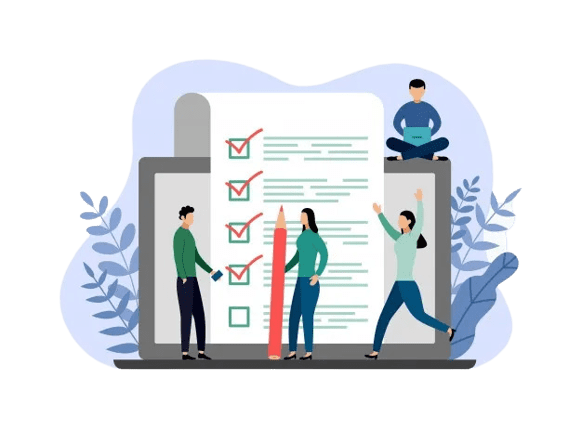Nail Biting OCD Assessment
3 Min Free Nail Biting OCD Assessment
Who Can Benefit From This Nail Biting OCD Assessment?
This nail biting OCD assessment can benefit individuals who suspect they may have obsessive-compulsive disorder (OCD) and are specifically concerned about their nail biting behavior.
It can help individuals gain insight into the severity and impact of their nail biting habits, identify triggers, and assess the level of distress and impairment caused by the behavior.
However, it’s important to note that this assessment is not a substitute for a professional evaluation. Individuals who are seeking a formal diagnosis and appropriate treatment should consult with a healthcare provider or mental health professional.

Nail Biting OCD Assessment Accuracy

The accuracy of a nail biting OCD assessment conducted through a written format, such as a questionnaire or set of questions, is limited. While the assessment can provide some insights and indications, it cannot replace a comprehensive evaluation conducted by a qualified healthcare provider or mental health professional.
A professional assessment takes into account a range of factors, including a detailed clinical interview, observation, and potentially other diagnostic tools. Therefore, for an accurate diagnosis of OCD or any mental health condition, it’s crucial to consult with a professional who can conduct a thorough evaluation based on their clinical expertise.
Types of Nail Biting OCD Assessment
Frequency Assessment
Measures how often an individual engages in nail biting behavior.
Compulsive Urges Assessment
Examines the intensity of urges or impulses to engage in nail biting.
Functional Impact Assessment
Assesses the negative effects of nail biting on daily functioning, relationships, and overall well-being.
Triggers Assessment
Identifies specific situations, emotions, or thoughts that trigger nail biting episodes.
Distress Assessment
Measures the level of emotional distress or discomfort caused by nail biting behavior.
Coping Strategies Assessment
Evaluates the effectiveness of strategies used to manage or control nail biting, such as behavioral techniques or self-help methods.
Handling Nail Biting OCD
Managing nail biting OCD involves a combination of self-help strategies and professional intervention. Here are some approaches that may be helpful:
- Awareness: Increase your awareness of when and why you engage in nail biting. Pay attention to triggers, thoughts, or emotions that precede the behavior.
- Habit reversal training: Work with a therapist to learn techniques that help replace nail biting with alternative behaviors, such as clenching fists or holding an object.
- Relaxation techniques: Practice relaxation exercises like deep breathing, mindfulness, or progressive muscle relaxation to reduce anxiety and tension associated with nail biting.
- Substitute behaviors: Find healthy alternatives to redirect the urge to bite nails, such as squeezing a stress ball, playing with a fidget toy, or engaging in a hobby that keeps hands occupied.
- Maintain good nail care: Keep nails short and well-groomed to minimize the physical ability to bite them.
- Cognitive-behavioral therapy (CBT): Seek professional help from a therapist trained in CBT to address underlying thoughts and beliefs contributing to nail biting OCD.
- Medication: In some cases, medication may be prescribed by a healthcare provider to manage anxiety or obsessive-compulsive symptoms associated with nail biting OCD.
- Support system: Engage with supportive friends, family, or support groups who can provide understanding and encouragement throughout your journey.
Remember, everyone’s experience with nail biting OCD is unique, and it’s essential to consult with a healthcare professional or mental health specialist for an accurate diagnosis and personalized treatment plan.

